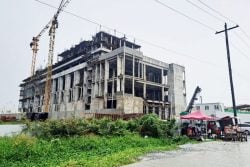Dear Editor,
Since few government officials respond to questions that are raised in the Press, we must thank Tejnarine Geer, Aquaculture consultant, for information on the brackish water shrimp project in Region 6 (https://www.stabroeknews.com/2024/06/07/opinion/letters/brackish-water-shrimp-project-has-proven-to-be-tremendous-success/).
Through your newspaper, I ask Mr Geer some follow-up questions:
In 2021, Minister Mustapha informed that ‘$58M [was] being injected to up Region Six shrimp production’ to 500,000 kilos by the end of 2021’ (https://www.stabroeknews.com/2021/07/13/news/guyana/58m-being-injected-to-up-region-six-shrimp-production/).
Has that annual total been revised downwards to 135,000 kgs in 2024, the figure given by Mr Geer?
How much of that G$58M was spent on the shrimp farms of private farmers, and how much for public benefit? Is there a repayment scheme between the private farmers and the Government of Guyana?
In 2022, DPI informed that ‘some $230 million has been committed to rehabilitate an additional 63 shrimp farms this year. This is expected to increase production to 500,000 kilograms per year, with an estimated value of over $300 million per annum’ (https://dpi.gov.gy/brackish-water-shrimp-production-advancing-in-region-six/).
Please explain how the farmers who benefitted from public expenditure have been/are repaying the sum of $230 million expended in 2022.
According to Mr Geer, ‘Farmers in the rural areas were able to earn over $1.8 billion in 2023’.
As a result of the State’s annual expenditure since at least 2021, how many full-time jobs were created (GRA and NIS compliant) by the benefitting farmers in the brackish water shrimp sector?
My overall questions are–
What is the justification for pouring large amounts of public money into private-sector ventures of low risk, apparently benefitting only a small number (<200) of farmers of brackish-water shrimps, with low employment generation and low positive impact on Guyanese nutrition (products mostly exported)?
Why did the farmers not go to commercial banks for loans to cover initial capital costs, given low risk and high return on capital?
Guyanese should contrast the public investment to benefit <200 farmers with the near-zero investment in management of coastal artisanal fisheries to benefit perhaps 10,000 families of fishermen and transporters (mostly men), processors and salespeople (mostly women) who are the principal suppliers of fish consumed by Guyanese.
Yours truly,
Janette Bulkan




